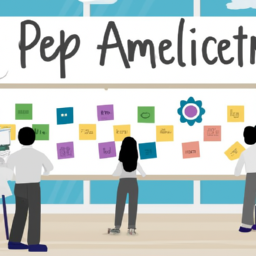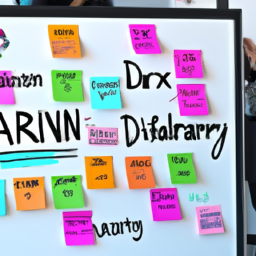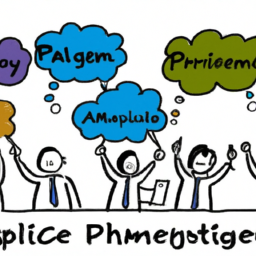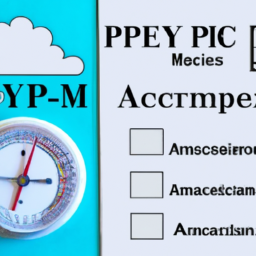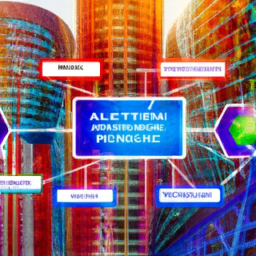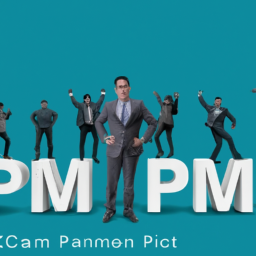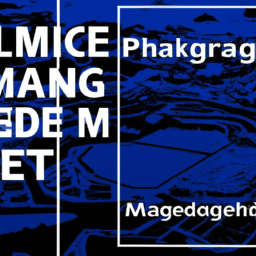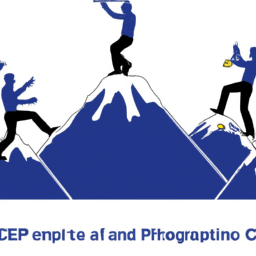Are you ready to tackle the PMI ACP exam?
Get ready to dive into the key concepts and techniques that will lead you to success.
In this article, we will break down the exam and provide you with the analytical insights you need.
From Agile methodologies to Scrum practices, Lean techniques to stakeholder collaboration, we’ve got you covered.
So, fasten your seatbelt and let’s embark on this journey together.
Key Takeaways
- Agile methodologies embrace change and respond quickly to evolving customer needs.
- Scrum and Kanban provide frameworks for effective work management and iterative development.
- Lean and Kanban techniques improve workflow and deliver value to customers.
- Continuous integration and delivery lead to faster and more reliable software releases.
Agile Methodologies and Principles
Agile methodologies and principles are essential in modern project management. Adopting an agile mindset allows teams to embrace change and respond quickly to evolving customer needs. With adaptive planning, project managers can continuously refine and adjust their strategies, ensuring that the project stays on track and delivers value to stakeholders.
The agile mindset encourages collaboration, transparency, and self-organizing teams, fostering a culture of innovation and continuous improvement. Agile methodologies, such as Scrum and Kanban, provide frameworks that enable teams to manage their work effectively, promoting frequent feedback and iterative development.
Scrum Framework and Practices
The Scrum framework emphasizes collaboration and continuous improvement. It is a popular Agile methodology used in project management to deliver value to customers through iterative and incremental development. Scrum implementation involves following certain practices and ceremonies to ensure effective project execution.
Here are three key elements of Scrum:
-
Daily Stand-up Meetings: These short, time-boxed meetings are held every day to keep the team synchronized. Each team member shares their progress, plans, and any obstacles they are facing.
-
Sprint Planning: This ceremony marks the beginning of a sprint, where the team collaboratively determines which backlog items to work on and how to achieve them. The team estimates the effort required and creates a sprint backlog.
-
Retrospective: At the end of each sprint, the team reflects on the completed work and identifies areas for improvement. This ceremony helps foster continuous learning and adaptation.
Lean and Kanban Techniques
To implement Lean and Kanban techniques effectively, you can use visual boards to track the progress of tasks and limit work in progress. Visual boards provide a clear and concise way to visualize the flow of work, identify bottlenecks, and track the progress of tasks.
One important concept in Lean and Kanban is value stream mapping, which involves mapping out the entire process from start to finish to identify areas of waste and inefficiency. By visualizing the value stream, you can identify opportunities for improvement and streamline the flow of work.
Another key concept is the pull system, which focuses on only starting new work when there is capacity to handle it. This helps prevent overburdening the team and ensures that work is completed in a timely manner.
Overall, Lean and Kanban techniques provide a systematic approach to improving workflow and delivering value to customers.
Continuous Integration and Delivery
You can achieve faster and more efficient software development by implementing continuous integration and delivery practices. These practices involve automating the process of building, testing, and deploying software, allowing for frequent and reliable releases.
Here are three key benefits of continuous integration and delivery:
-
Improved quality: By automating testing, you can catch bugs and issues early on, minimizing the risk of releasing faulty software. Automated testing ensures that each code change is thoroughly tested, reducing the chance of introducing new bugs into the system.
-
Faster feedback loops: Continuous integration and delivery enable developers to receive immediate feedback on their code changes. This allows for quick iterations and fixes, preventing the accumulation of technical debt and improving overall development speed.
-
Streamlined deployment pipelines: With continuous integration and delivery, you can create streamlined deployment pipelines that automate the process of delivering software to production environments. This eliminates manual steps and reduces the chance of human error, resulting in more efficient and reliable deployments.
Implementing continuous integration and delivery with automated testing and deployment pipelines can significantly enhance your software development process, leading to faster, more reliable releases.
Stakeholder Engagement and Collaboration
Collaborating with stakeholders is essential for successful software development, as it allows for effective communication and alignment of goals. Stakeholder communication is crucial throughout the entire software development process to ensure that all parties involved are on the same page and have a clear understanding of the project’s objectives. Team collaboration is another key aspect of successful software development, as it allows for the pooling of ideas, skills, and resources to create the best possible product. Effective collaboration within the team promotes better problem-solving, faster decision-making, and a more efficient development process overall. By fostering strong stakeholder communication and team collaboration, software development projects can be more successful, with higher customer satisfaction and increased chances of achieving project goals.
| Stakeholder Communication | Team Collaboration |
|---|---|
| – Regular meetings with stakeholders to discuss project progress and address any concerns. | – Encouraging open communication and idea sharing within the development team. |
| – Providing regular status updates and gathering feedback from stakeholders. | – Collaborating on tasks and projects to leverage each team member’s strengths. |
| – Actively listening to stakeholders’ needs and concerns and adjusting the project accordingly. | – Establishing clear roles and responsibilities within the team to avoid confusion and ensure accountability. |
Frequently Asked Questions
How Does the PMI ACP Exam Assess Knowledge and Skills Related to Agile Methodologies and Principles?
The PMI ACP exam assesses your knowledge and skills pertaining to agile methodologies and principles. It evaluates your understanding of various agile frameworks and techniques, such as Scrum, Kanban, and Lean.
You must demonstrate your ability to apply these methodologies in real-world scenarios and adapt them to different project environments. The exam also tests your proficiency in agile leadership, collaboration, and continuous improvement.
What Are Some Common Challenges Faced When Implementing the Scrum Framework and Practices in an Organization?
Implementing the Scrum framework and practices in an organization can be a daunting task. Many challenges may arise, such as organizational resistance to change and lack of understanding about Agile methodologies.
It’s like trying to navigate through a dense forest without a map. But fear not! By addressing these challenges head-on and providing comprehensive training and education, you can pave the way for a successful Scrum implementation and reap the benefits of improved collaboration and productivity.
Can You Provide Examples of How Lean and Kanban Techniques Can Be Used to Improve Project Efficiency and Delivery?
To improve project efficiency and delivery, lean techniques and Kanban implementation can be powerful tools.
Lean techniques focus on eliminating waste and maximizing value, allowing teams to streamline their processes and deliver high-quality results.
Kanban, on the other hand, helps teams visualize and manage their work, promoting continuous flow and reducing bottlenecks.
What Are Some Best Practices for Implementing Continuous Integration and Delivery in an Agile Project Environment?
Implementing continuous integration and delivery in an agile project environment is crucial for improving efficiency and speed of software development. One interesting statistic is that organizations practicing continuous deployment are 2.6 times more likely to exceed their goals for profitability, productivity, and market share.
To achieve this, a DevOps implementation is necessary, which involves integrating development and operations teams to automate the software delivery process. This ensures that changes are constantly tested, integrated, and deployed, resulting in faster and more reliable releases.
How Can Effective Stakeholder Engagement and Collaboration Contribute to the Success of an Agile Project?
Effective stakeholder engagement and collaboration are crucial factors in the success of any agile project. By actively involving stakeholders throughout the project lifecycle, you ensure their needs and expectations are met.
Collaborating with stakeholders fosters a shared understanding and promotes effective decision-making. This leads to better alignment of project goals, increased satisfaction, and ultimately, project success.
Engaging stakeholders in a transparent manner also helps to build trust and confidence, essential elements for successful agile project delivery.
Conclusion
In conclusion, the PMI ACP exam covers essential concepts and techniques that are crucial for success in the agile project management field.
By understanding and applying agile methodologies, such as Scrum and Lean, and incorporating continuous integration and delivery practices, project managers can drive efficient and collaborative projects.
The exam also emphasizes the importance of stakeholder engagement and collaboration, ensuring that all parties involved are actively involved in the project’s success.
With the knowledge gained from this exam, professionals can excel in their roles and propel their organizations towards agile excellence.
So, don’t miss the opportunity to enhance your skills and become a master of agile project management!


